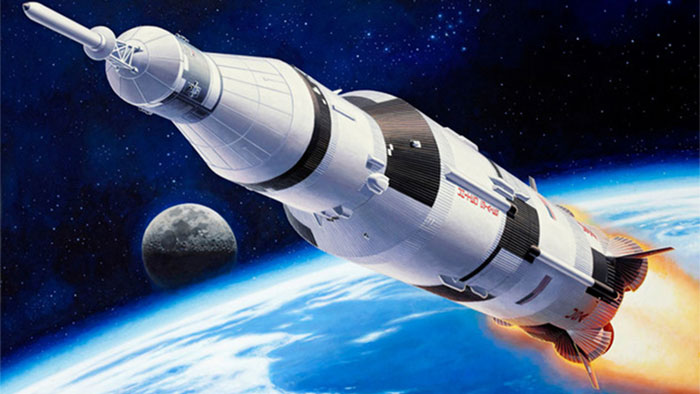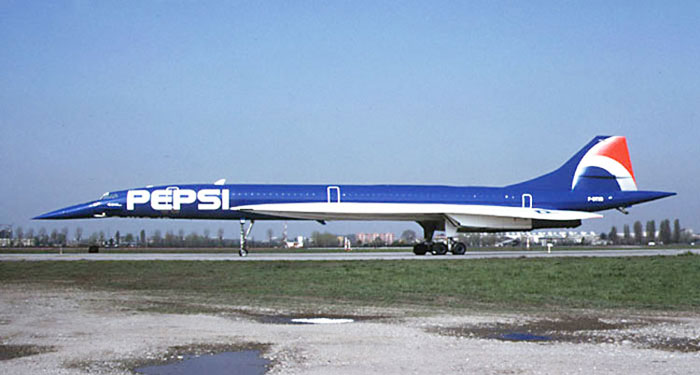
Saturn V © Revell
Paint, pretty simple stuff you would think, not the sort of thing that springs to mind when you think about space missions, rockets, Apollo, the international space station. Maybe some think it’s a means to an end make the rocket look good and the big U S A down the side of the Saturn V, as it ascends on the launch videos, is an awe-inspiring site.
But paint has many more important reasons to be there than a just a giant signage board for national branding.In September 2002 Canadian amateur astronomer Bill Yeung was awake before dawn, comet hunting from a small, private observatory in Calgary, Alberta.
He had already been successful in discovering hundreds of asteroids, comets and minor planets, and was searching for a particular ‘PHA’ or Potentially Hazardous Object. This target would be low in the sky and barely bright enough to be observed with his 18-inch telescope. For four nights he searched unsuccessfully: however he did spot another object, moving unusually quickly across the sky.
Yeung sent his observations to Tim Spahr, an astronomer at the Minor Planet Centre, who concluded that the supposed asteroid was in orbit around the Earth, but that ‘nothing normal could fit with these observations’. The astronomical community was puzzled by this mysterious object, named J002E3.
When the spectrographic analysis was conducted by astronomers at the University of Arizona, it was found that the object was coated in titanium dioxide white: a paint used on the Apollo rockets.After some searching, Paul Chodas of NASA’s Jet Propulsion Laboratory found a piece of hardware that could match the orbit: the sixty-foot-long third stage of the Apollo 12 Saturn V. Astronauts ejected the stage during the November 1969 mission, after which ground control reignited the engine to send it into a solar orbit.
But the burn lasted too long, putting the hardware into an unstable orbit between the Earth and the Moon. In 2003, as the investigation continued, the mysterious object was nudged by the gravitational forces of the Earth and Moon into a solar orbit. J002E3 is projected to return to near Earth in 30 years time. Until then, it remains either a piece of space history in orbit, or the only known asteroid painted titanium dioxide white
The Saturn V’s iconic black and white stripes made the giant rocket instantly recognisable around the world. But like everything in aerospace engineering, the stripes had an important function. Known as ‘Roll Patterns’, the lower stages of Saturn V were painted so ground observers could detect rotation during launch.

V2 Rocket roll pattern painted on
Werner Von Braun’s team, who designed NASA’s rockets, brought this feature from the German V-2 which was also painted with black and white roll patterns in tests. Early American rockets such as the ‘Juno’ that launched the Explorer probes featured a ‘Z-mark’ pattern that worked in a similar way.[1]
When Von Braun’s team were testing the Saturn 1, black stripes absorbed sunlight more and were found to be heating the rocket by up to 12% more than expected. Later iterations of the Saturn, that lifted Pegasus satellites as payload, had plain white upper stages, for more thermal stability. This issue reappeared with the first, dummy Saturn V, which was rolled out to the launch pad and shaken by brave engineers to see how it would fare in high winds. The first stage fuel tank, which featured broad black stripes, was found to be heating to dangerous levels, so these were reduced in size on the Apollo rockets, rising only midway on the lower stages.
Following the Apollo program, the Space Shuttle’s main fuel tank was painted white to match the orbiter, but after the initial test flights it was found that the leaving the orange insulation did not cause issues with launchpad heating. An unpainted main tank saved 600 pounds of unnecessary weight, giving the Shuttle greater efficiency and payload lift capability.
The most iconic aircraft and rockets often blaze at the leading edge of engineering, marrying memorable aesthetics with the requirements of high-speed flight. This week New Zealand aerospace company Rocket Lab are scheduled to launch their new small-sat launcher ‘Electron’. Electron is unusual in its sleek black paintwork, matching the colours of the Kiwi rugby team: but launching from New Zealand also means that Electron is likely to face less heating on the pad than at launch-sites closer to the equator. As one of the smallest launch vehicles developed, at a mere 1.2-meter diameter and 17-meter height, the rocket will absorb less heat both on the pad and during ascent.
An all-black paint scheme is perhaps most widely associated with stealth aircraft such as the Lockheed SR-71: the fastest manned, air-breathing aircraft ever produced. Nicknamed the ‘Blackbird’, 32 airframes were produced and flown by the US Air Force on reconnaissance missions between 1966 and 1990.
When the Blackbird was retired, two were acquired by NASA, who used them for research into high-speed and high-altitude flight until 1999. The body of the SR-71 heated in flight to above 500 degrees centigrade from atmospheric friction, as it cruised above Mach 3.[2] The leading edge of the fins were exposed to the most intense heat – around 1000 degrees centigrade.

SR-71 Flight surface temperatures
To find the best way to deal with this, the Blackbird’s predecessor, the A-12, flew with two variants: one with fins painted in black radar-absorbent coating, and another in bare titanium.[3] Most A-12s flew with the unpainted fins: however, on the twin seater SR-71, the titanium was all painted black. This was found to reduce the temperature in flight by 86 degrees centigrade, (186F), dissipating internal heat build-up more than it was raised by the increased absorption of sunlight.
Occasionally, supersonic aircraft fly with more exotic colours: for example, the Bell X-1, the first aircraft to exceed the speed of sound, was painted bright orange for visibility. The colour is technically known as ‘International Orange’: the same as the space suits used by NASA.[4]
In 1996, the world’s only supersonic airliner, Concorde underwent a radical repainting. Signing a deal worth an undisclosed amount reportedly as high as five million dollars, Pepsi was rebranding itself at the height of a marketing war with Coca-Cola. Air France Concorde designated ‘Sierra Delta’ was chosen as one of the later airframes, which benefited from lighter titanium rivets. In the three years previously, ‘Sierra Delta’ had set the record for both westbound and eastbound round-the-world flights: in 32 hours 49 minutes and 3 seconds, and 31 hours, 27 minutes and 49 seconds in 1992 and 1995.[5]

Pepsi Concorde
In a maintenance facility in Orly, near Paris, Air France repainted the aircraft with the utmost secrecy. The job took 2000 hours and used 200 litres of paint. ‘Sierra Delta’ was then wrapped in brown paper until the day of the unveiling. Under cover of night, the blue Concorde taxied out onto the runway and flew from the maintenance facility to Gatwick Airport, near London, where Claudia Schiffer, Andre Agassi and Cindy Crawford attended with an army of journalists and press.
Once in its blue livery, ‘Sierra Delta’ was only able to travel at the cruising speed of Mach 2 for a maximum of 20 minutes due to the inferior heat dissipation of the darker paint. Despite retaining white wings to avoid heating the fuel tanks, Sierra Delta cruised at a leisurely Mach 1.7. After flying 16 flights in the Pepsi blue, Sierra Delta was repainted in its previous white coat.
High-performance paint protects spacecraft and aircraft in flight, but can also become hazardous debris when it loses integrity. British astronaut Tim Peake tweeted this image from the cupola of the International Space Station in May 2016 (the cupola is the observatory module with 7 windows, one of which is the largest ever used in space) .
A 7mm diameter chip was found in the cupola window (which window, big or small main or side), caused by a piece of debris thought to be as tiny as a fleck of paint: a few thousands of a millimetre across.[6] The ISS is shielded with metallic surfaces for maximum reflectivity, and white thermal blanket.[7]

ISS with thermal blanket covering
This blanket, or ‘beta cloth’ is composed of woven silica fibres, and has been used since the Apollo era. Its resistance to micrometeorites would protect against paint flakes like the one that chipped the cupola. However, when NASA Engineer Robert Frost was asked in 2013 which aspects of the ISS would be changed if it were redesigned today, he suggested that the trusses might have improved thermal stability, and would probably be coated in thermally resistant paint.
Like the Apollo 12 third stage, retro clothes and bad haircuts, it seems that some things just keep coming back around.

